Make your own seed starting mix with just 3 ingredients!
One crucial step in ensuring a bountiful harvest is starting your seeds off right with a well-balanced seed starting mix. I have started seeds in numerous different mixes while noticing there is definitely a difference on sprouting time and seedling growth.
Creating your own mix allows you to blend to your specific plants’ needs. We’ll look into three DIY seed starting mix recipes that are not only cost-effective but also provide your seeds with the optimal environment for germination and early growth.
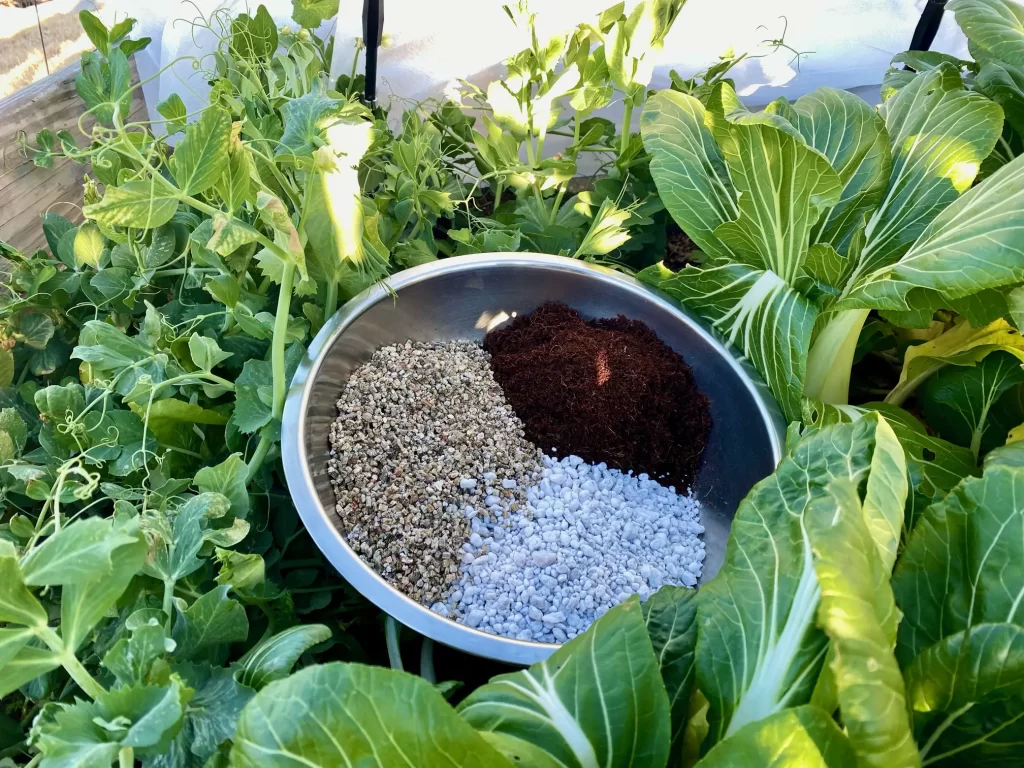
| Skip To the Recipe |
|---|
| Basic Blend |
| Nutrient Boosted |
| LightWeight Mix |
Disclosure: Some of the links in this article are affiliate links, meaning I may earn a small commission if you make a purchase through them, at no extra cost to you.
What is Seed Starting Mix?
A seed starting mix is a blend of materials that provides an ideal environment for seeds to germinate and young seedlings to grow.
It usually consists of lightweight and well-aerated components such as coconut coir, perlite, and vermiculite. They offer a controlled and nutrient-balanced medium, optimizing conditions for successful early-stage plant development.
Commercial mixes are readily available, but they can include ingredients that are unhealthy, unnecessary, and at times can be quite expensive. We will explore benefits to using a seed starting mix as well as several recipe options depending on need.
Is Seed Starting Mix Necessary?
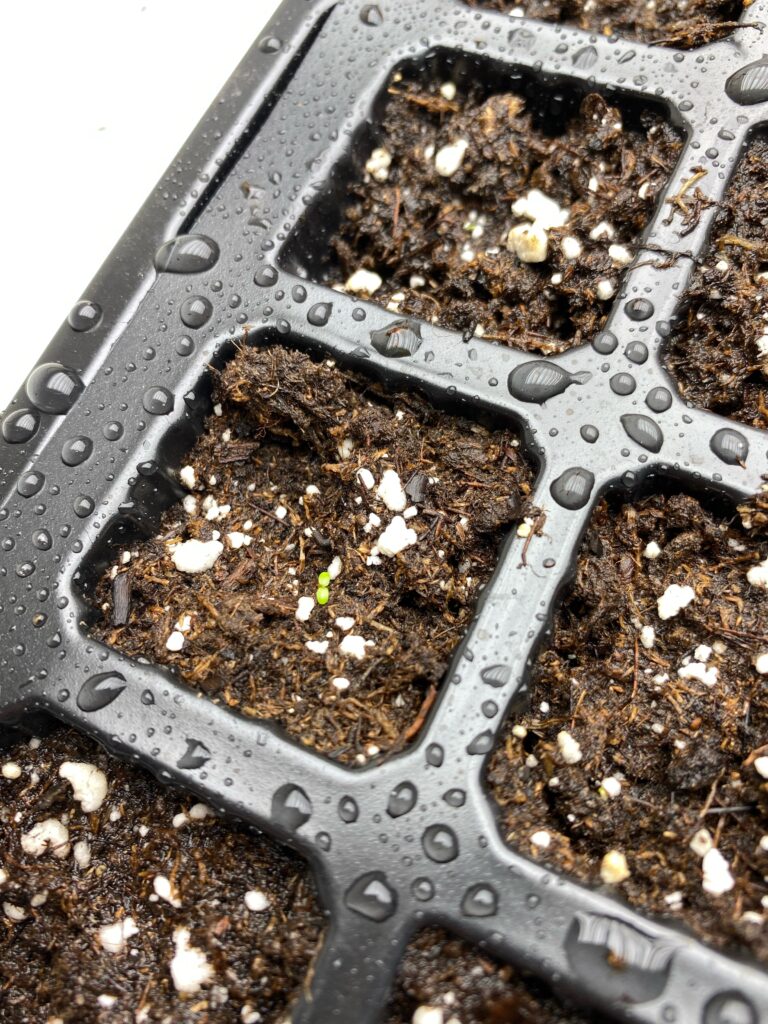
When we think of seed starting mix we are aiming to provide the best environment for seed sprouting and growth. These soilless seed starting mix recipes allow us to tailor our mix to meet those goals.
Traditional soil can be too dense, inhibiting proper aeration to promote optimal root development. Soil may not have proper water retention, while creating our own mix we can formulate it to retain moisture without becoming waterlogged.
Other characteristics we are able to control when creating out own mix are sterility and nutrient control. We can minimize the risk of introducing harmful elements (disease, microorganisms, insects) while also supplementing nutrients as needed during the early stages of plant development.
It’s essential to choose or create a mix that meets the unique requirements of seeds and young plants, promoting healthy development from the start.
Seed Starting Mix vs Potting Soil
Both Seed starting mix and potting soil serve different purposes in the realm of gardening. Seed starting mix is a specialized blend crafted to provide the perfect environment for seeds during germination and early seedling growth. These mixes, like the ones below, can be soilless as seeds do not need outside nutritional support to germinate.
Potting soil is a more adaptable medium suitable for established plants in containers. It often contains a mix of soil, organic matter, and sometimes additional amendments for nutritional support.
Each plays a distinct role in the plant life cycle, with the seed starting mix focusing on the beginning growth, and potting soil supporting plants through their later stages of growth.
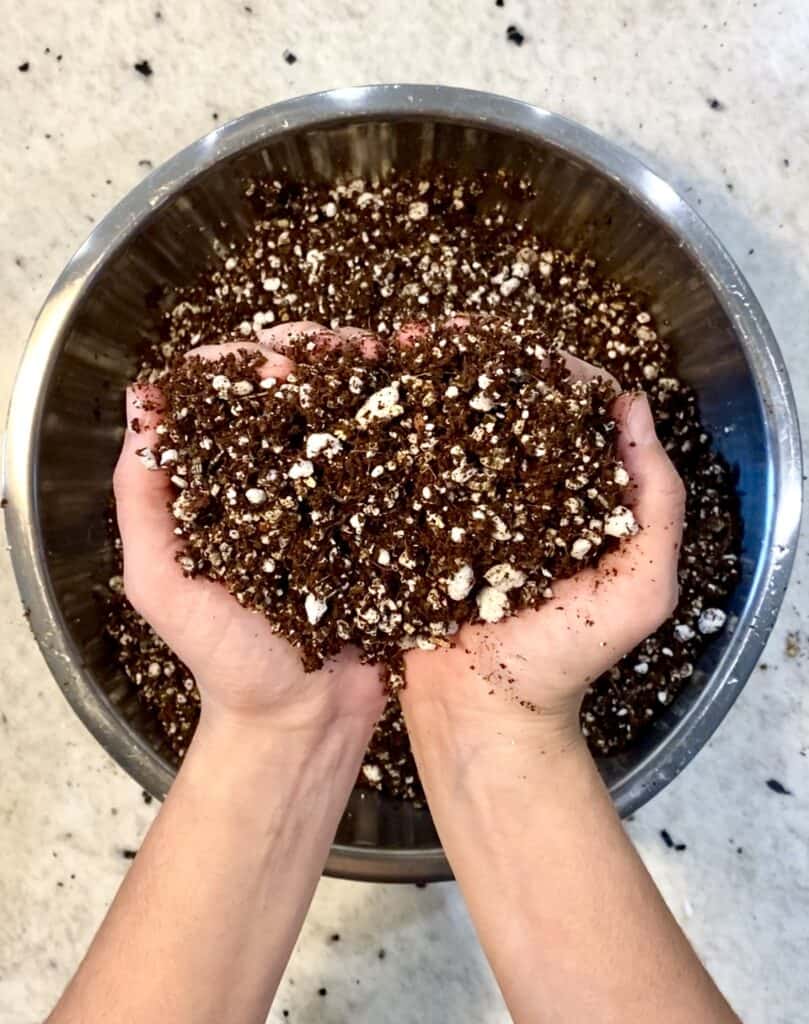
3 Great DIY Seed Starting Mix Recipes
The choice of mix can depend on the specific needs of different types of seeds and plants. Here’s a general guide for each type of mix.
Basic Blend
- Ideal for a wide range of seeds and plants.
- Suitable for common vegetables like peppers, lettuce, and herbs.
- Works well for flowers, such as marigolds and zinnias.
Nutrient-Boosted
- Recommended for fast-growing plants and those that have higher nutrient requirements.
- Beneficial for vegetable seedlings like tomatoes, cucumbers, and squash.
Lightweight
- Excellent for small seeds and delicate seedlings.
- Suitable for herbs like lavender and chamomile.
- Works well for flowers with tiny seeds, such as pansies.
These are my preferred ratios but keep in mind you can modify as needed for your preferences/needs.
Basic Blend for All-Purpose Seed Starting Mix
Ingredients:
- 3 part coconut coir
- 1 part perlite
- 1 part vermiculite
Instructions:
- Begin by moistening the coconut coir with warm water. Allow it to absorb the water and expand fully.
- Combine coconut coir, perlite, and vermiculite in a large mixing bowl or container.
- Thoroughly mix the components until you achieve a uniform texture.
- Moisten the entire mix with water until it reaches a damp but not soggy consistency.
- Fill your seed trays or pots with the mix, and sow your seeds according to the recommended planting depth for each variety.
Explanation:
- Coconut coir provides excellent water retention and aeration, promoting healthy root development.
- Perlite aids in aeration and drainage, preventing the mix from becoming too compact.
- Vermiculite contributes to water retention and provides essential minerals for seedlings.
*Parts are referring to a ratio or proportion of the ingredients. If you decide to use a cup as your measuring unit, it means you would use 3 cups of coconut coir, one cup of perlite, one cup vermiculite. If you choose a larger unit, such as a gallon, it would be 3 gallons gallon of coconut coir to one gallon of perlite, and one gallon of vermiculite.
Nutrient-Boosted Mix for Fast-Growing Seedlings
Ingredients:
- 3 parts coconut coir
- 1 part perlite
- 1 part vermiculite
- 1 part worm castings (compost is another option)
- 1/2 part finely ground eggshells (for calcium)
Instructions:
- Begin by moistening the coconut coir with warm water. Allow it to absorb the water and expand fully.
- Combine coconut coir, perlite, and vermiculite in a large mixing bowl or container.
- Incorporating worm castings and eggshells after mixing the coconut coir, perlite, and vermiculite.
- Ensure that the worm castings are well distributed throughout the mix.
- Moisten the mix thoroughly, maintaining a slightly damp consistency.
- Use this nutrient-boosted mix for seeds that require a bit more nutrition during their early stages.
Explanation:
- Worm castings are a rich source of nutrients, including nitrogen, phosphorus, and potassium, promoting robust seedling growth.
- Finely ground eggshells provide calcium, which is crucial for preventing blossom end rot in certain plants.
Lightweight Mix for Tiny Seeds and Delicate Seedlings
Ingredients:
- 3 parts coconut coir
- 1 part perlite
- 1/2 part vermiculite
- 1/2 part fine sand
Instructions:
- Begin by moistening the coconut coir with warm water. Allow it to absorb the water and expand fully.
- Mix coconut coir, perlite, vermiculite, and fine sand thoroughly in a large container.
- Adjust the moisture level to achieve a light and fluffy texture.
- This mix is ideal for small seeds and delicate seedlings that require a gentle environment for germination.
Explanation:
- Fine sand adds weight to the mix, preventing tiny seeds from being buried too deeply and providing stability for delicate seedlings.
- The lightweight nature of this mix allows for easy root penetration and minimizes the risk of overwatering.
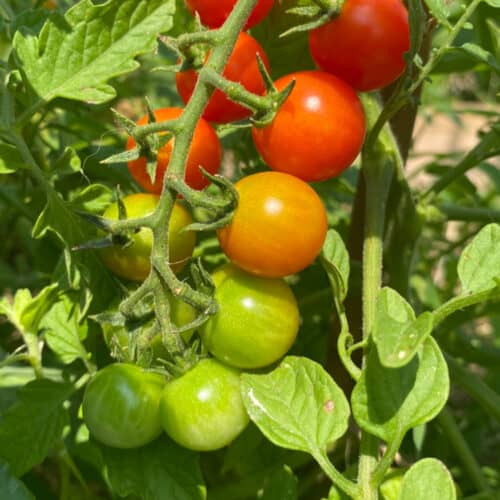

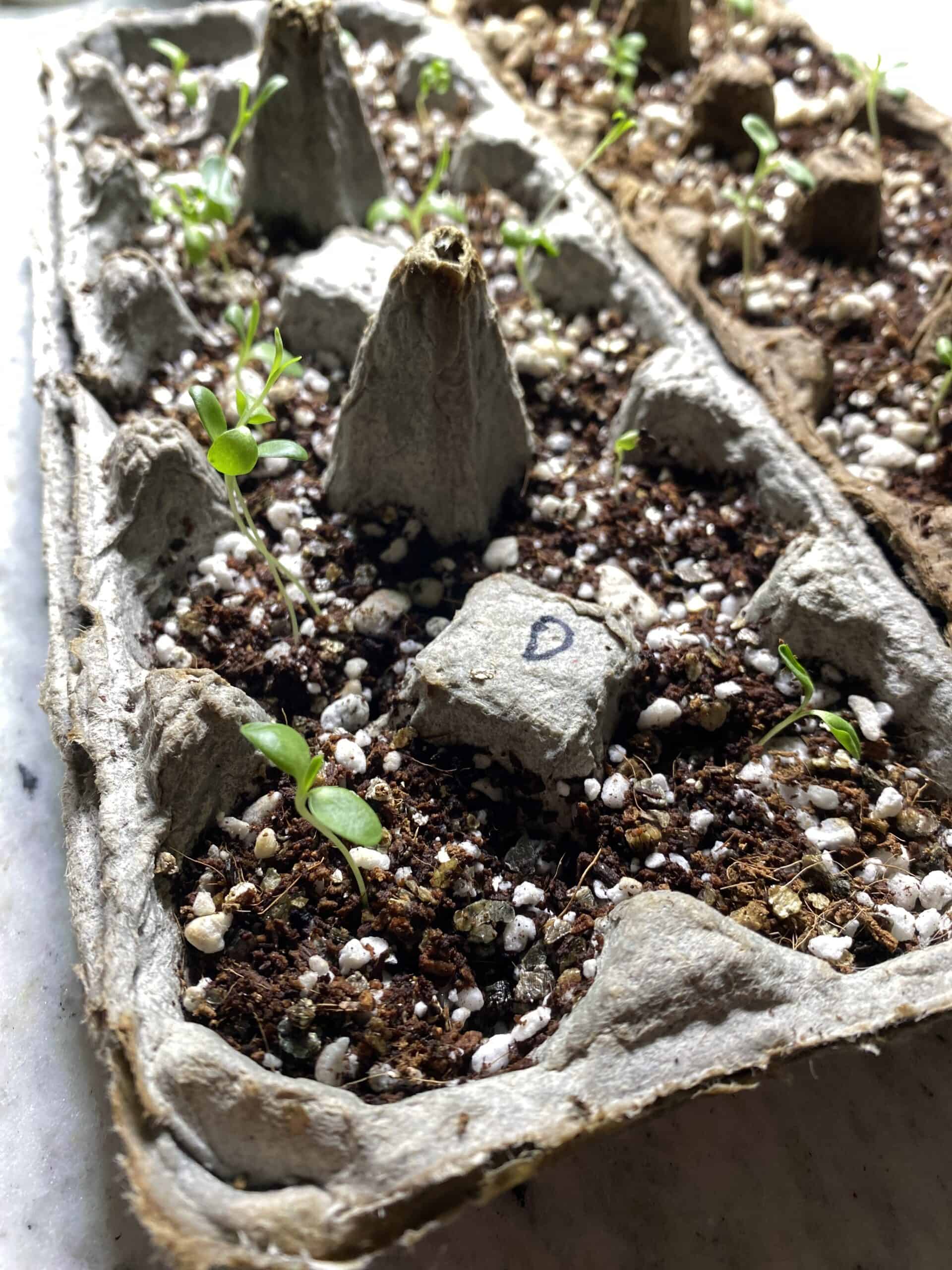
[…] light during the initial stages of growth. Use seed trays or individual pots filled with a well-balanced seed-starting mix. Keep a watchful eye on moisture levels and provide gentle warmth to encourage […]